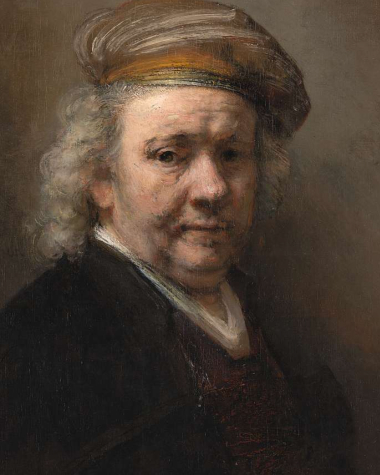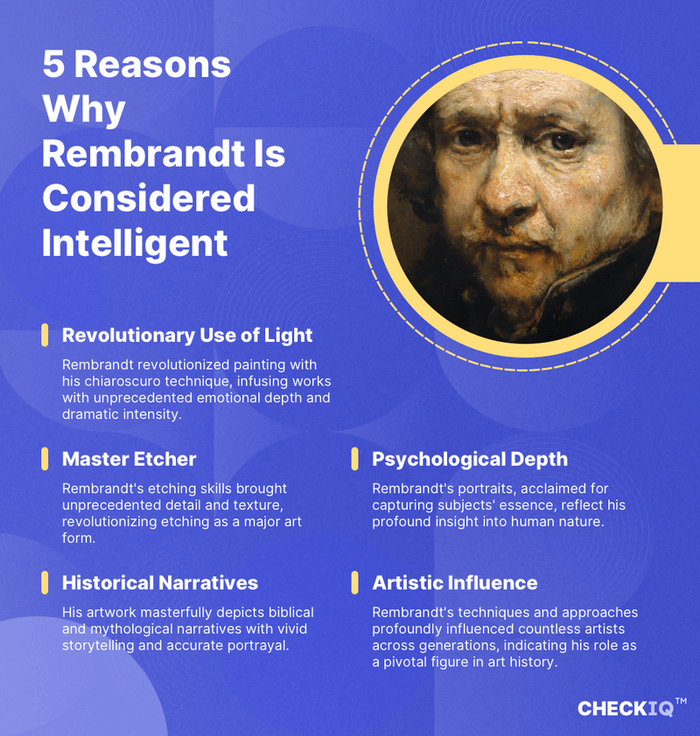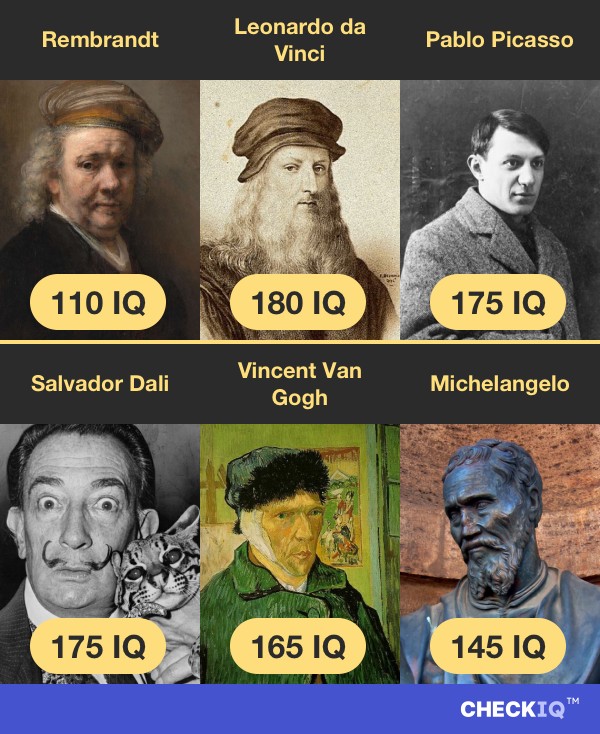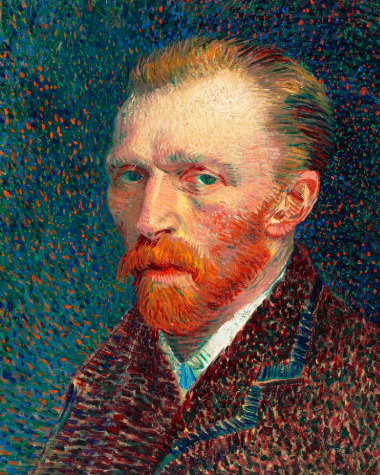Rembrandt Has a 110 IQ

The streets of 17th-century Amsterdam buzzed with merchants and artists alike, but one man captured the human spirit like no other. Rembrandt van Rijn, whose IQ has been estimated at 110, was a master not of grand ideas or complex theories, but of emotion, light, and shadow. Born in 1606 during the Dutch Golden Age, Rembrandt left behind a legacy that continues to inspire and provoke.
The rise of a painter shaped by his times
Rembrandt was born in Leiden, the ninth child of a miller and a baker’s daughter. His upbringing was modest, but his parents ensured he received a good education. Enrolled at the Latin School, he studied classical literature and history, subjects that would later inform the depth of his works. Despite briefly attending Leiden University, Rembrandt’s true passion lay in art. He apprenticed with local painters and eventually studied under Pieter Lastman in Amsterdam, where he honed his skills in history painting and the use of dramatic lighting, known as chiaroscuro.The thriving economy of the Dutch Republic in the 17th century fueled a booming art market, and Rembrandt quickly rose to prominence. By his early 30s, he was one of Amsterdam’s most sought-after portraitists, capturing patrons with an honesty that often revealed their humanity rather than their grandeur. His work, like The Anatomy Lesson of Dr. Nicolaes Tulp, combined meticulous detail with emotional depth, showcasing both his technical skill and ability to tell a story.
A life of brilliance and hardship
Rembrandt’s success brought wealth and prestige, but his life was marked by personal tragedy and financial ruin. In 1634, he married Saskia van Uylenburgh, whose beauty and spirit became the muse for many of his works. The couple faced heartbreak, losing three of their four children in infancy. Saskia herself died in 1642, leaving Rembrandt devastated. His later relationship with Hendrickje Stoffels, who became his companion and model, brought some solace but also scandal, as the church accused her of living in sin.Despite these personal struggles, Rembrandt continued to create masterpieces. His self-portraits, over 80 in total, are among his most remarkable works. They chart not only his aging face but also his shifting moods and fortunes. From the confident young man of his early career to the weathered and introspective figure of his later years, these portraits reveal a profound understanding of the human condition.
Yet, financial mismanagement and changing tastes in art led to his decline. By 1656, Rembrandt declared bankruptcy. His grand house and prized art collection were auctioned off, but even in poverty, he remained prolific. Works like The Return of the Prodigal Son and The Jewish Bride reflect his enduring mastery, blending compassion and drama with unparalleled skill.
The legacy of a man who captured life’s truth
Rembrandt’s estimated IQ of 110 might not place him among the intellectual elite, but his brilliance lay in his intuitive grasp of emotion and storytelling. His ability to illuminate the subtleties of human experience – whether in the tear of a grieving widow or the pride of a guild member – set him apart. Unlike contemporaries who sought perfection or idealized beauty, Rembrandt celebrated imperfection. He found grace in aging faces, rough hands, and the fleeting moments of life.While his pupils, like Ferdinand Bol and Carel Fabritius, carried forward his techniques, none matched the soulfulness of their master’s works. Art historians have often debated the authenticity of works attributed to him, yet the essence of “Rembrandtness” remains unmistakable – a raw, honest connection between the subject and the viewer.
Today, Rembrandt is celebrated not only for his technical innovations but also for his deep empathy and insight. His paintings and etchings are windows into a world that, though centuries removed, feels strikingly familiar. Through his art, he invites us to see ourselves – not as idealized figures, but as we truly are.


Average Confidence Level
HighThe average IQ of Rembrandt comes from Genetic Studies of Genius and is deemed reliable. The scores from two other sources are provided for reference. It’s worth noting, however, that these estimates are speculative, as IQ testing did not exist in Rembrandt’s era.
 Confidence Level: High
Confidence Level: High
 Confidence Level: Low
Confidence Level: Low
 Confidence Level: Low
Confidence Level: Low
5 Reasons Why Rembrandt Was Considered Very Smart
- Revolutionary Use of Light: Rembrandt's innovative employment of light and shadow, known as chiaroscuro, brought dramatic intensity to his works. It set a new standard for emotional depth in painting.
- Master Etcher: His etching techniques displayed unmatched skill, allowing Rembrandt to achieve remarkable detail and texture. His work elevated etching as a significant art form.
- Psychological Depth: Rembrandt's portraits are celebrated for their ability to capture the soul and essence of the subject. This demonstrates his deep understanding of human nature.
- Historical Narratives: His biblical and mythological scenes are praised for their vivid storytelling and accuracy. The details of his work showcase an exceptional knowledge of these subjects.
- Artistic Influence: Rembrandt's techniques and approaches profoundly influenced countless artists across generations, indicating his role as a pivotal figure in art history.

Try our accurate online IQ Test. Get your IQ score immediately.
Start IQ Test
How High Is Rembrandt's IQ Compared to the Rest of the World?
With an IQ of 110, Rembrandt falls into a bracket achieved by the top 25% of the population. Adjusting for the Flynn Effect – which we've briefly covered here –, which estimates an average IQ increase of about 3 points per decade, Rembrandt's IQ of 110 in the 1600s would roughly equate to an IQ of 145 in 2024, a level which corresponds to the 99.865th percentile (top 0.13%). This adjusted IQ score would make him eligible to several high-IQ societies including Mensa, Intertel and Triple Nine Society. However, the stratospheric threshold of 160 required for the Epimetheus Society would remain beyond reach. Even so, Rembrandt's legacy transcends numbers; his genius in capturing human emotion and redefining artistic norms leaves an indelible mark on art history.

Is Rembrandt's IQ Top in the Painter Field?
Rembrandt's IQ of 110 places him in an elite group of artists, though not at the zenith where luminaries like Leonardo da Vinci's IQ of 180 reign. The genius of da Vinci, evident in both art and inventions, demonstrates a rare blend of creativity and intellect. Similarly, Pablo Picasso and his IQ of 175 reshaped the art landscape with Cubism. His work shows that revolutionary ideas often stem from extraordinary minds. Salvador Dali's IQ, also 175, fueled his surreal works and proved that high IQ often correlates with groundbreaking artistic expression. Vincent Van Gogh, though troubled, leveraged his 165 IQ to pour emotion and depth into his canvases. Michelangelo stands out with a 145 IQ, his sculptures and frescoes leaving a monumental impact on the Renaissance.

Do you think Rembrandt's IQ of 110 is fair? Drop your thoughts in the comments section below (scroll down a bit)!

Discover the IQ of Other Celebrities
-
 Rowan Atkinson178 IQ
Rowan Atkinson178 IQ -
 Barack Obama155 IQ
Barack Obama155 IQ -
 Carl Sagan170 IQ
Carl Sagan170 IQ -
 Matt Damon160 IQ
Matt Damon160 IQ -
 Jeffrey Dahmer145 IQ
Jeffrey Dahmer145 IQ -
 Vincent Van Gogh165 IQ
Vincent Van Gogh165 IQ


